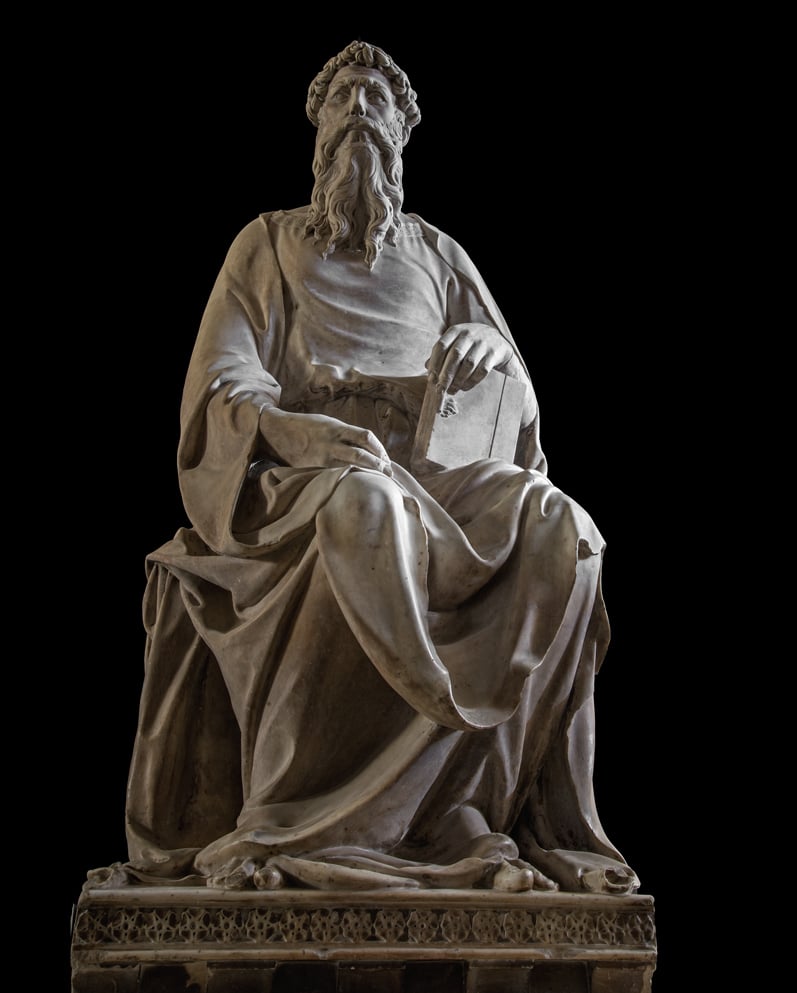Art & Exhibitions
At the Museum of Biblical Art, Donatello’s ‘Saint John’ Shows What Art Looked Like Before Museums
THE DAILY PIC: The Florentine sculptor made art with God, not man, in his sights.

THE DAILY PIC: The Florentine sculptor made art with God, not man, in his sights.

THE DAILY PIC: The show called “Sculpture in the Age of Donatello” opens tomorrow at the Museum of Biblical Art in New York, and Donatello’s Saint John the Evangelist, from around 1412, is one of its treasures. (Many experts can’t imagine why such a masterpiece has made the risky trip from Florence without any scholarly motive, but that’s a story for another day – and that I happen to have already written).
This sculpture may be from the “age of Donatello,” but when seen up on a plinth in a modern museum, it could be that it has really become modern art. For one thing, the colored paint that very likely once graced it has long since disappeared, bringing Donatello closer to our monochrome, Cy Twombly tastes than he might have intended. For another, the piece was designed to sit way higher than it can in any museum, up on the façade of the Duomo in Florence: To make it truly come together as a coherent work – according to 15th-century notions, rather than modernist ones – you have to view it from flat on your back on the floor. Then Saint John’s extra-long torso starts to get properly hidden behind his knees; his giant hands begin to look less peculiar, achieving a 3-D “repoussoir” effect that’s almost out of a View-Master slide – and totally to Renaissance tastes.
But much more importantly, I’m not convinced that even counting this show’s pieces as museum-ready “visual” art, as we moderns do, gets them right. They have plenty of details that would have been entirely invisible, hence unvisual, when they were first displayed: the pseudo-Arabic writing on the top edge of Saint John’s robe; the amazingly convincing “Roman” sandal on the foot of his companion, the Saint Luke statue by Nanni di Banco that has also made the scary trip to New York. (I actually believe that Nanni’s Saint Luke is – again, in Renaissance terms – the greater figure. Maybe I’ll argue that another day.)
I think that the making itself of great art, simply as a means of adding something important to the world’s inventory, mattered as much to early artists as providing pleasure or even insight to some silly bunch of viewers. In ancient Egypt, there were amazing works of sacred art that were never meant to be seen by living souls; Renaissance art represents the very tail end of that same tradition, just as it turned the corner toward our modern notion of art meant to please the eye. It was a moment when you wanted to get that sandal right, even if no one ever saw it – but also wanted to imagine what your work would look like to a crowd gawking below. (Photo by Antonio Quattrone, © Opera di Santa Maria del Fiore)
For a full survey of past Daily Pics visit blakegopnik.com/archive.